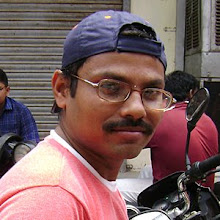The Frey Norris Gallery has been featuring the work of Shalinee Kumari, a contemporary Indian woman artist painting in the style commonly referred to as “Mithila” or “Madhubani” painting. Mithila is a region in Bihar, in India. Madhubani is the name of a town in this region
Traditionally (and still today), these graphically engaging paintings were done by women as mural art decorating the walls of their homes, often marking an important celebrations, a wedding or the birth of a child, for example, or religious themes. The show at the Frey Norris Gallery shows the transformation of this painting style into a contemporary form of expression on paper and canvas that is now sold to art collectors. While stylistically linked to traditional forms, some Mithila artists are exploring a wider range of issues.
The Asian Art Museum also has a collection of Mithila paintings some of which are currently on view on the 3rd floor. This installation includes a male painter in this genre, who is among those encouraged by the economic success of the women artists to enter this once purely local, folk art tradition. The museum installation of Mithila paintings closes after Sunday, July 26 and conservation policy states that these light sensitive works go into dark storage to rest for five years so that they may retain their brilliant colors for generations to come.link
Showing posts with label Frey Norris Gallery. Show all posts
Showing posts with label Frey Norris Gallery. Show all posts
Tuesday, 14 July 2009
Friday, 29 May 2009
Shalinee Kumari: American Debut To Open at Frey Norris Gallery
The Frey Norris Gallery will present the American debut solo exhibition for Indian artist Shalinee Kumari. Shalinee Kumari hails from a remote village in one of India’s poorest and most rural states, the Mithila region of Bihar. For centuries the women of Mithila have traditionally adorned their homes with wall paintings, in preparation for engagements, weddings, and births. Kumari continues and expands upon this tradition by depicting current world events as she learns of them through her primary connection to the outside world—the BBC piped into her local café. She focuses on three primary global subjects: capitalism, terrorism and environmentalism—all through her vibrantly colored paintings on paper.
The eldest of four daughters, at twenty three years of age, Kumari was to be promised into marriage but denied her family’s wishes to pursue a career in art. To date, she has received grants from the East West Foundation, the Ford Foundation, and others to pursue her career enabling her to attend a local art school, to exhibit and lecture in Delhi, and ultimately, to leave India for the first time to attend her first solo exhibition at Frey Norris Gallery in San Francisco.
Kumari may be the first artist of this Mithila region to tackle contemporary subjects. The Berkeley Art Museum, the San Francisco Asian Arts Museum and the Craft and Folk Art Museum in Los Angeles are all advocates, collectors and exhibitors of the work itself.
A 20-page catalogue is available with an essay by David Szanton, the former Director of International and Area Studies at UC Berkeley, a social anthropologist with a long interest in art history and the relationship between art and social change.link
The eldest of four daughters, at twenty three years of age, Kumari was to be promised into marriage but denied her family’s wishes to pursue a career in art. To date, she has received grants from the East West Foundation, the Ford Foundation, and others to pursue her career enabling her to attend a local art school, to exhibit and lecture in Delhi, and ultimately, to leave India for the first time to attend her first solo exhibition at Frey Norris Gallery in San Francisco.
Kumari may be the first artist of this Mithila region to tackle contemporary subjects. The Berkeley Art Museum, the San Francisco Asian Arts Museum and the Craft and Folk Art Museum in Los Angeles are all advocates, collectors and exhibitors of the work itself.
A 20-page catalogue is available with an essay by David Szanton, the former Director of International and Area Studies at UC Berkeley, a social anthropologist with a long interest in art history and the relationship between art and social change.link
Subscribe to:
Comments (Atom)
